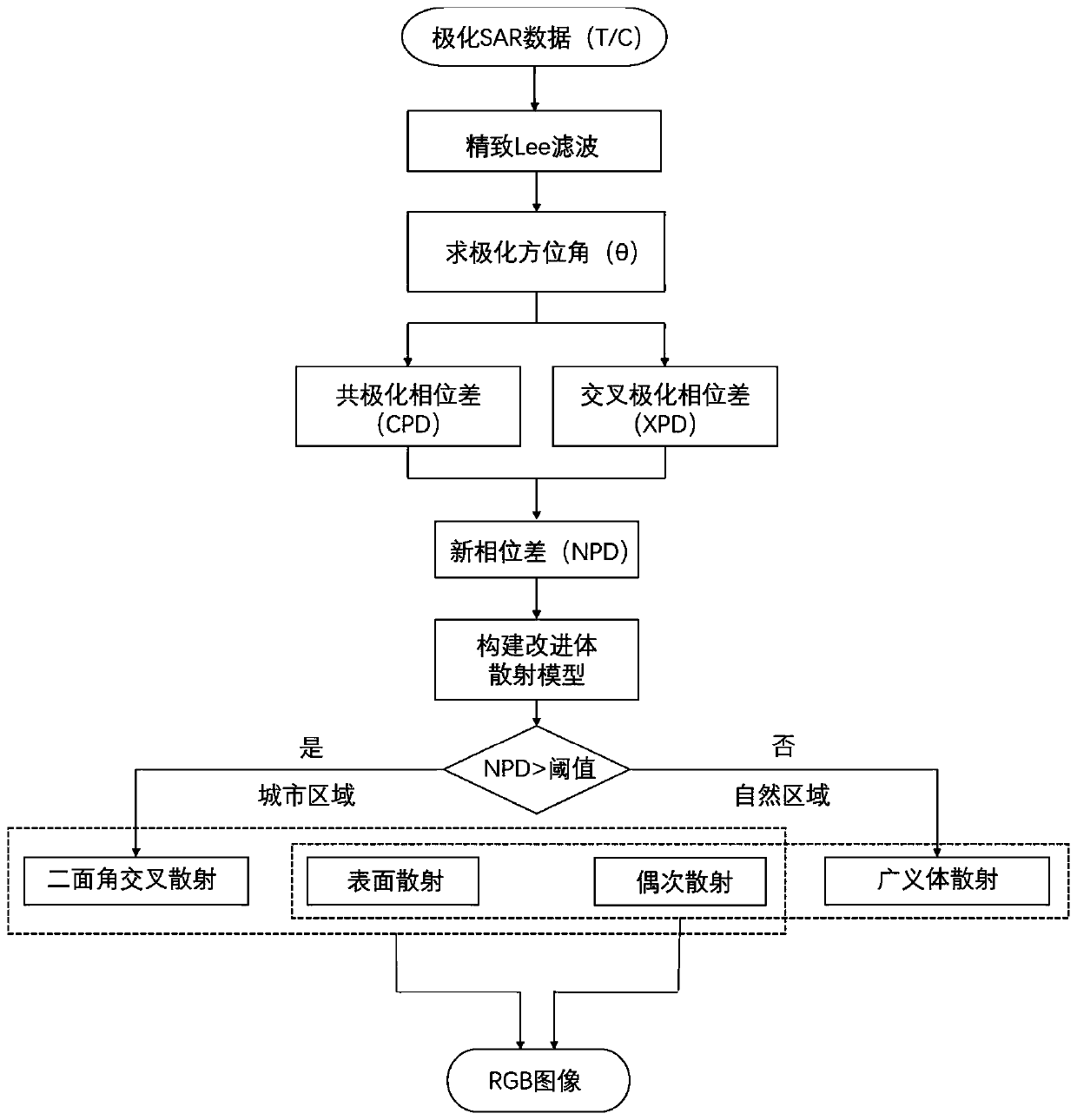Freeman/Eigenvalue Decomposition Method for Adaptive Volume Scattering Models
A technology of eigenvalue decomposition and scattering model, applied in the field of image processing, can solve the problem of overestimation of volume scattering, and achieve the effect of reducing the proportion of pixels, increasing the proportion, and suppressing the problem of overestimation of volume scattering
- Summary
- Abstract
- Description
- Claims
- Application Information
AI Technical Summary
Problems solved by technology
Method used
Image
Examples
Embodiment 1
[0034] The present invention is a freeman / eigenvalue decomposition method of an adaptive volume scattering model, see figure 1, Including the following steps:
[0035] (1) Input the polarimetric SAR image data matrix:
[0036] Direct input of polarization SAR image coherence matrix T or covariance matrix C, when the input data is coherence matrix T, T contains six matrices T 11 , T 12 , T 13 , T 22 , T 23 , T 33 , represents the polarization information of each pixel in the polarimetric SAR image; when the input data is a covariance matrix C, C contains six matrices C 11 ,C 12 ,C 13 ,C 22,C 23 ,C 33 , represents the polarization information of each pixel in the polarimetric SAR image; the covariance matrix C and the coherence matrix T can be converted to each other. This example uses the polarization coherence matrix T as input.
[0037] (2) Exquisite Lee filtering:
[0038] Using the refined Lee filtering method, the polarimetric synthetic aperture radar SAR im...
Embodiment 2
[0052] The freeman / eigenvalue decomposition method of the adaptive volume scattering model is the same as that of Embodiment 1. In step (4), the new phase difference NPD is obtained by the polarization azimuth angle θ, including the following steps:
[0053] 4a) Calculate the co-polarization phase difference CPD:
[0054]
[0055] The left side of the above equation represents the exponential form of the complex number, and the co-polarization phase difference CPD is equal to ρ HHVV represents the co-polarization correlation coefficient. The middle of the above formula represents the general form of the relevant element terms of the input polarimetric SAR image covariance matrix C, where:
[0056]
[0057]
[0058]
[0059] C 11 ,C 33 ,C 13 is the correlation term of the covariance matrix C.
[0060] 4b) Calculate the cross-polarization phase difference XPD:
[0061]
[0062] The left side of the above equation represents the exponential form of the comp...
Embodiment 3
[0076] The freeman / eigenvalue decomposition method of the adaptive volume scattering model is the same as that of Embodiment 1-2. In step (6) of the present invention, the threshold value of the new phase difference NPD used for judgment is determined, the region where the target is located, and the corresponding break down.
[0077] The original hybrid freeman / eigenvalue decomposition algorithm form in the prior art:
[0078]
[0079] α is the scattering angle, P s is the surface scattering power, P d is the even scattering power, P v represents the volume scattering power.
[0080]According to the original mixed freeman / eigenvalue decomposition:
[0081]
[0082]
[0083] the t above ab , a,b∈(1,2,3) represent the corresponding items of the coherence matrix T of the polarimetric SAR image. The volume scattering power P of each pixel can be obtained from the above formula v , surface scattering power P s , Even-order scattering power P d .
[0084] The gene...
PUM
 Login to View More
Login to View More Abstract
Description
Claims
Application Information
 Login to View More
Login to View More - R&D
- Intellectual Property
- Life Sciences
- Materials
- Tech Scout
- Unparalleled Data Quality
- Higher Quality Content
- 60% Fewer Hallucinations
Browse by: Latest US Patents, China's latest patents, Technical Efficacy Thesaurus, Application Domain, Technology Topic, Popular Technical Reports.
© 2025 PatSnap. All rights reserved.Legal|Privacy policy|Modern Slavery Act Transparency Statement|Sitemap|About US| Contact US: help@patsnap.com



